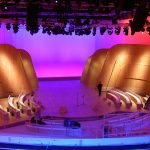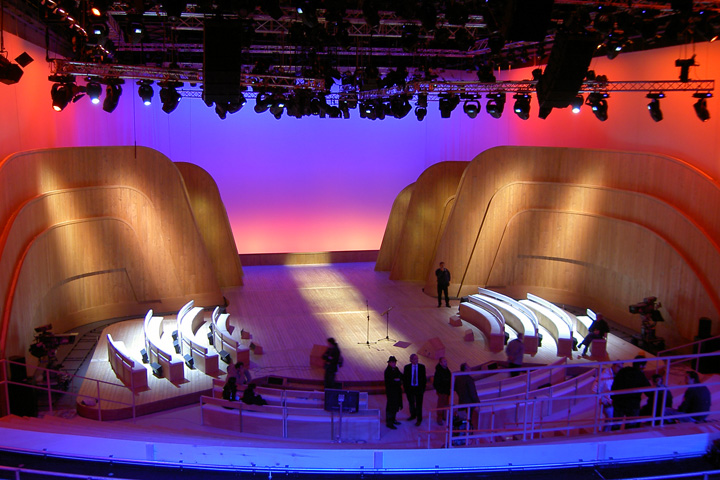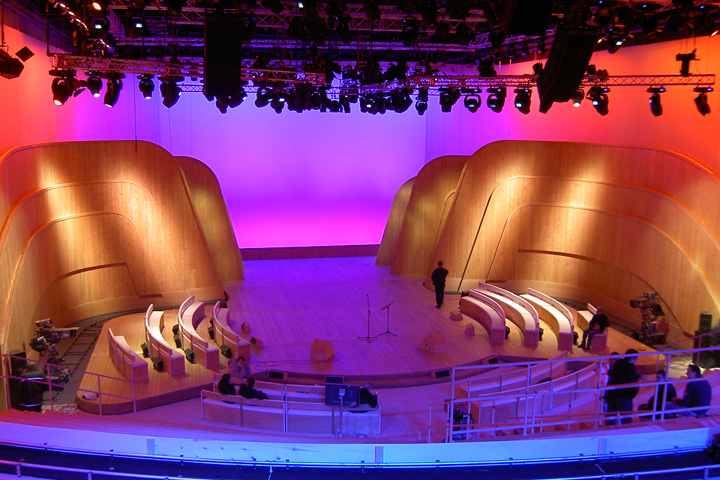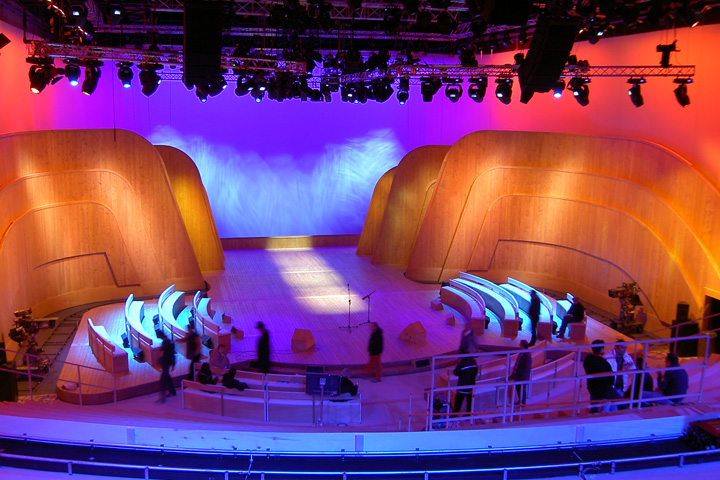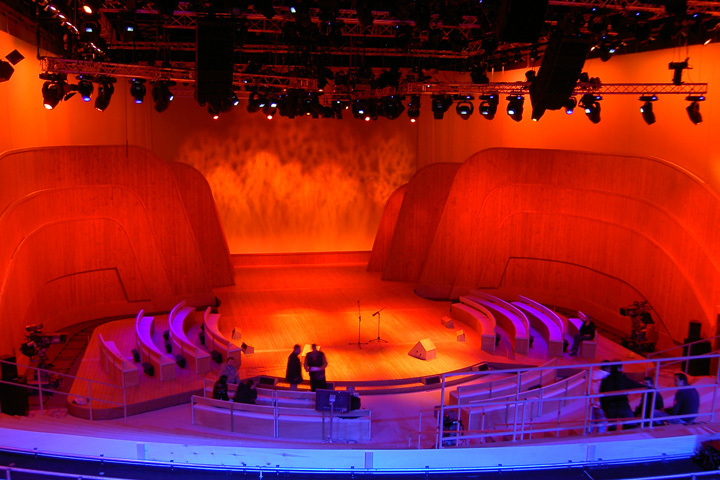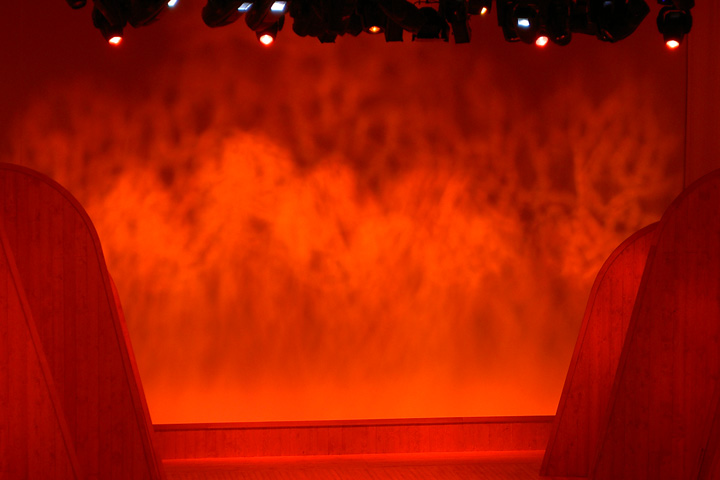The Clay Paky projectors illuminate Roberto Benigni’s presentation of Dante’s ‘Inferno’, one of the most important televised events in 2007. The show was broadcast live on RAI 1 on November 29th without a single commercial break. It focused on the work of the renowned poet Dante Alighieri, and it was the perfect sequel to a similar event held in December 2002 where Benigni read some verses from Dante’s work ‘Paradise’.
The programme was realized in the cinema and television production centre – Cinecittà Studios in Papigno (Terni) in the post-modern scenario of an old disused factory. The extremely ‘clean’ and semicircular scenography created entirely by Gaetano and Chiara Castelli in light wood, ideally reproduced the infernal circles which, together with the galleries arranged like an amphitheatre, encircled the stage from where the star conducted his show.
The Director of Photography Fausto Carboni tells us about his work: “It was necessary to combine the typical demands of a “one-hand-show” with the need to interpret the Dante theme with a light show. It was also necessary to illuminate a theatrical show, bearing in mind the television requirements. We came to an agreement with the programme director Stefano Vicario, and decided to use a white light on the protagonist and full colour on the background and the audience.”
Carboni wanted to respect some basic theatrical rules: lights which are mainly fixed but very precise, warm but never intrusive atmospheres …. in short, a light design that enhances without «killing» the scene.
A most suggestive Cyclorama effect was achieved by placing some Clay Paky CP Color 400 along the perimeter of the studio, that recreated the symbolic infernal environment on enormous PVC sheets, with extremely warm colors, ranging from red to orange. The Clay Paky Alpha Spot HPE 1200 and the Alpha Profile 1200 were installed on the ceiling on a large truss structure and were used to recreate the effects on the backdrops, the scenery and the audience public.
Carboni explains further: “The color of backdrops is often in total contrast with that of the audience, separating reality from symbolism, the world from the after world. Benigni at that moment in time is the link between these two worlds, therefore the choice of the neutral light on him was not simply functional, but also a precise choice of language.”
The programme required substantial human and technical resources, and Fausto Carboni worked in collaboration with the RAI lights team in Milan, exploiting the precious experience of Raffaele Vailati and Massimo Cipriani at the console and the head of the electrician team Nicola Bianchi.
All the motorized lights were supplied by DI and DI, a large service company in Rome which is specialized in technical lighting setups for the cinema and television, and present at the most important events on television. Di and Di have a wide range of lighting proposals which often include Clay Paky Alpha, as they consider them to be the best products for the professional sector in which they operate.
Fausto Carboni emphasises that Clay Paky projectors are extremely reliable and practical, an essential quality when working on such important live television productions: “During events like this, there are millions of eyes looking at your work, the margin of error is very low, and thereforeyou have to be able to count on the best material available. Clay Paky has always been a name I can count on, and once again on this occasion the projectors repaid me for the trust I pledged on them”.
Carboni also found the Profile and HPE 1200 gobos excellent for the chosen special effects. “I used the Profile framing system in many situations, for instance to create the bright pathway which symbolically led Benigni-Dante into the Inferno. I also used the Profile as rear-lighting for the PVC sheet:a series of products were installed above a staircase, at precise distances, to get the best possible effect with the composite profile spot figures, realised using various profile spots- asin the case of the church during the story of Paolo and Francesca.”
Thanks to technical and artistic work of immeasurable calibre and, above all, thanks to the interpretative charisma of Roberto Benigni – one of the few authors who are capable of interpreting current day affairs and universal topics at this level – the programme received an extraordinary response from both the audience and the critics, and is one of the programmes with the highest viewer rate in the history of Italian TV.
Technical Staff:
Director: Stefano Vicario
Director of Photography: Fausto Carboni
Scenography: Gaetano e Chiara Castelli
Head of Electrician Team: Nicola Bianchi
Console: Raffaele Vailati, Massimo Cipriani


